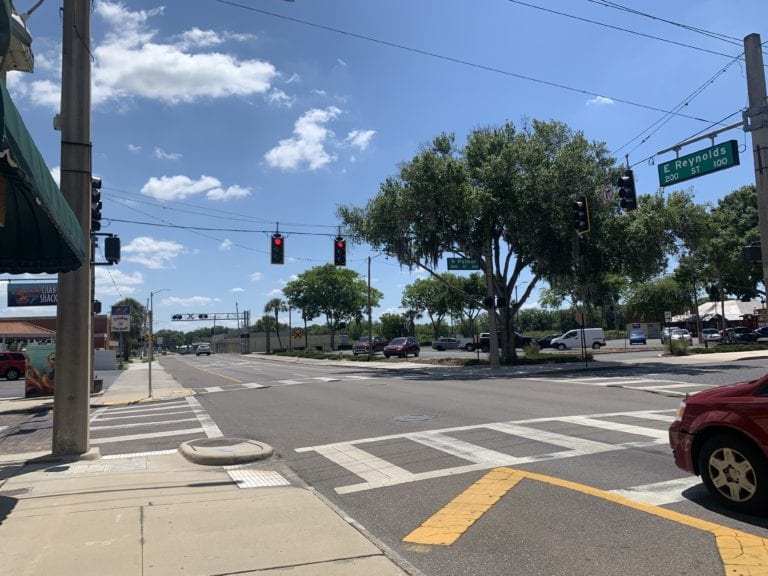
Two separate updates regarding traffic in the city were brought to the table during last week's commission meeting.
Though the majority of last week’s commission meeting was centered around discussion of McIntosh Park upgrades, several other items were laced throughout the agenda to make it an impactful night.
Traffic truly was the name of the game and two different items highlighted the steps the City of Plant City is taking toward ensuring better safety for the community.
Commissioners unanimously agreed to purchase the Glance Preemption and Priority System from Temple Inc. for $96,634.00, via a Florida Department of Transportation contract.
This is the first phase of a two-year plan to make intersections around the city safer.
Essentially, the city wants to install a secure GPS and radio-enabled Emergency Vehicle Traffic Preemption System at key intersections all over town.
The system allows normal operations at traffic lights to be altered if needed to provide “a safe, controlled passage of emergency vehicles through signalized intersections when responding to emergency calls.”
Plant City Fire Rescue partnered with the city’s Traffic Operations to test out the GPPS by Temple Inc. at four major intersections located near Fire Station 2 on Alexander Street.
The test period lasted for three months and just recently wrapped up. After the testing was completed, they reported the system had no interoperability issues connecting to the traffic signal hardware that was already in place and to the hardware installed in all of the Fire Rescue vehicles.
Most notably, the system ended up reducing response times by approximately two minutes.
Commissioners agreed to purchase the product and the first phase will have them installed at 14 intersections: Alexander-Baker, Alexander-Thonotosassa, Alexander-Reynolds, Alexander-MLK, Alexander-Grant, Alexander-Mendonsa, Alexander-Timberline, Alexander-Donna, Alexander-James L. Redman, Alexander-Walmart, James L. Redman-Park, Collins-Alsobrook, Park-US 92 and James L. Redman-Maki.
Now that the purchase has been approved, it should take 30 to 45 days for installation to be completed.
Pedestrian safety was also woven into the meeting after City Manager Bill McDaniel shared the results of a pedestrian project that had been underway for months in his report.
Traffic Operations Manager Fred Baxter and his team have been working with FDOT on a “pedestrian safety enhancement feature commonly known as a Leading Pedestrian Interval (LPI). The basis for the LPI is as follows: At signalized intersections equipped with pedestrian-signal indications, it is common practice for the pedestrian ‘walk’ interval to coincide with the adjacent circular green vehicle phase, creating a potential conflict between turning vehicles and pedestrians.”
By utilizing LPI timing, pedestrians are given the chance to enter the intersection three seconds or more before drivers are given the green signal. Three seconds may not sound like much, but it can mean all the difference if you’re standing at a crosswalk waiting for the light to change. You can be several feet into the intersection after three seconds and essentially signal to drivers that you’re there and you’re heading in their direction.
According to the report from McDaniel, the use of an LPI is expected to result in the following:
• Increased visibility of crossing pedestrians.
• Reduced conflicts between pedestrians and vehicles.
•Increased likelihood of motorists yielding to pedestrians.
The city and FDOT implemented the LPI feature at intersections with signals along Reynolds and Baker streets in historic downtown and featured a three-second LPI phase. After it was installed, they tested the operation of the revised signal timing to make sure everything was progressing and queueing as normal.
“While the LPI changes will likely go unnoticed to many pedestrians and motorists initially, it is a significant safety enhancement feature for pedestrians at very little cost to the City, FDOT and motorists,” the report read.
